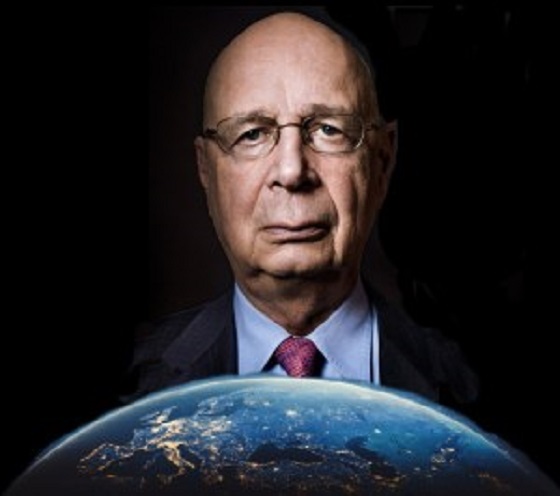2025 Federal Election
Mainstream Media Election Coverage: If the Election Was a NHL Game, the Ice Would be Constantly Tilted Up and to the Left
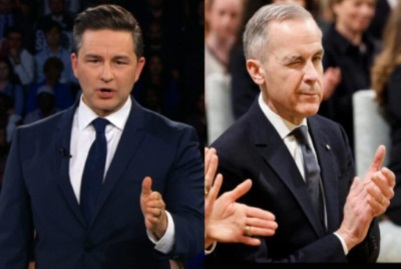
From EnergyNow.Ca
Like good refs for a NHL hockey game, election coverage should be as unbiased as possible and provide balanced judgement. In Canada, mainstream media rarely provides this.
By Jim Warren
Canada’s Conservatives face an uphill battle when it comes to obtaining unbiased coverage in the mainstream Canadian news media. Any in doubt need only watch a half hour of election coverage on CBC or tune-in to the CTV news channel, which is stacked with left leaning election commentaries favoring the Liberals, despite their abysmal record over the last 10 years, which has all but been forgotten by many media journalists in their attempt to help Canadians forget as well.
The Liberal government’s provision of tens of millions in grants and tax credits to support the jobs of journalists has certainly not made reporters any less Liberal-friendly.*
But the truth is, the Liberals did not actually need to bribe most mainstream journalists and their employers to gain their support. They already had it. And that’s been bad news for the fortunes of the gas and petroleum sectors along with many of the other things we do to create wealth in Canada (like farming, mining, construction and manufacturing, including petrochemicals).
Year’s before the Liberals launched their 2019 media subsidization programs, Canada’s legacy media outlets had embraced climate alarmism and were okay with the demonization nonrenewable energy. They functioned like public relations agents for the environmental movement’s anti-Alberta oil campaign (2008-2021).
For two decades now, conventional media outlets have been publishing and broadcasting sensationalized misinformation about the need to make deep and immediate cuts to CO2 and methane emissions to save the planet from imminent doom.
For most journalists in the conventional media, it was no great leap to fall in step behind the Trudeau government’s anti-oil, gas and pipelines agenda. Climate alarmists in the media assumed Justin Trudeau, Steven Guilbeault, Jonathan Wilkinson and other members of the Liberal cabinet were on the side of the angels. Now, with Justin Trudeau out of the picture, it has become evident that current Prime Minister Mark Carney will continue with the anti-oil, gas agenda of Justin Trudeau, who personally endorsed him and has been advising Trudeau for a number of years to not only keep the carbon tax, but increase it.
As a result, the Liberal assault on conventional energy went largely unchallenged in the legacy media.
Thankfully there are a few notable exceptions. Outstanding columnists and journalists like Don Braid and Brian Lilly have survived. They have drawn attention to the economic madness of the assault on oil, gas and pipelines, the consequent stifling of economic growth and their effects on national unity.
And there are of course large numbers of journalists and policy analysts working online outside the mainstream who have provided the bulk of journalistic criticism of the Liberals. People like Dan McTeague have been making appearances in online interviews and commentaries posted to you tube. And many online news sites including Northern Perspective have been keeping tabs on Liberal mismanagement and corruption.
As a general proposition many mainstream journalists under the age of 40 have swallowed exaggerated misinterpretations of climate science. And they accept at face value the environmental movement’s irrational claims about the urgent need to massively and rapidly reduce the consumption of oil and natural gas. Journalists rarely address the economically ruinous effects of reducing oil and gas consumption too fast and by too much.
This is in part because many of them are economically illiterate. If they went to university they typically studied soft subjects like sociology, gender studies and social justice. The values and beliefs they adopted at university are reinforced by their favourite social media sites.
They know more about things like the plight of the transgendered than they do about wealth creation or how to foster economic growth. This makes it rather easy for them to accept the gospel according the federal Liberals. “Oil is bad and why would we fuss over fiscal and economic problems when deficits and debt are just numbers that take care of themselves?”
Mainstream journalists haven’t had their eye on the ball when it comes to the social and economic harm caused by Liberal environmental policy. We’re not talking about chump change lost because of a bit of irritating red tape.
My own calculations, under an experimental scenario, show that the cost of not having Energy East, Northern Gateway, and the Trans mountain expansion fully approved and operating for a 10 year period was approximately $290 billion in lost revenue. (The historical sample period was from 2013-2023, a period of mostly low global oil prices, which suggests the $290 billion figure significantly underestimates the potential for lost revenue)
The Fraser Institute and others have conducted and published important studies identifying the massive decline in investment in the petroleum and gas industries and more generally across many economic sectors. In the first five years the Liberals were in office their energy related environmental policies like Bill C-69 (The Impact Assessment Act) in particular, cost an estimated 200,000 jobs nationally and a massive reduction in investments in Canada’s oil and gas sectors.
These losses were not mourned by the conventional media based in Central Canada. Some journalists assumed clobbering the energy industry in the west was a good thing because it would mitigate climate change. They were either unaware of or uninterested in the people who lost jobs and the damage being done to the Canadian economy.
No less influential is the mainstream media’s laser like focus on issues primarily relevant to Toronto and Montreal. Problems on the prairies typically escape notice. As a result some low information voters in the regions where Canadian elections are decided are unclear as to whether Saskatchewan is a city or a province.
Supporting evidence
On May 2 of 2024 an article appeared in EnergyNow which used published research and the actual scientific reports issued by the inter-governmental Panel on Climate Change (IPCC) to demonstrate that the mainstream media in North America and Europe have bought into hyperbolic misinterpretations of climate science. The column showed how Journalists have taken as truth the false claims of overly zealous environmental activists about the pace of global warming and how the green transition will supposedly have little to no adverse impact on most people’s livelihoods and economic well-being.
The article explains how journalists, climate alarmists and environmental activists inhabit the same corner of the social media universe. The research shows many journalists are more likely adopt the opinions and information they encounter on Twitter (Now X) and other online forums to inform their stories than the scientific research published by organizations like the IPCC.
May 2, 2024, Opinion: How social Media and Sloppy Journalism Misrepresent Climate Science
The fact is too many Canadian journalists have bought into the environmental zealotry of an online tribe which both shares and shapes their beliefs in relation to climate science and their views about oil and gas. This has been the case since the mid to late 2000s.
To repeat. The Liberals did not need to subsidize journalists to get them to buy into their environmental and energy policies—they were already onside.
The real reason for the subsidy programs was to prevent media employers from laying off journalists. Times have been tough for the mainstream news media. The solvency of many newspapers in particular is tenuous. Network television has also been suffering. The CBC goes $1.2 billion into the red each year, which is explained by the fact it attracts just 4.4% of Canada’s viewing audience during prime time. Streaming has radically changed North Americans viewing preferences and the sources they subscribe to.
Mainstream media is in palliative care. Plowing government grant money into it is like investing in the buggy whip business well after Henry Ford had cranked out tens of thousands of Model Ts.
There may be some mainstream journalists who will suffer a pang or two of common sense or integrity and criticize Liberal environment and energy policy during the election campaign. But it seems highly unlikely mainstream media outlets will desert the Liberals and get behind the Conservatives. Anyone betting the farm on that sort of outcome needs to set down the crack pipe.
For CBC to come out swinging against Mark Carney would require one of those proverbial “caught him in the act and thrown in jail” moments.
All that being said, we might take a bit of faint hope from an older tendency among journalists. Some of them still have an underlying psychological need to pounce on gotcha moments.
These brand of journalists are on the lookout for evidence exposing malfeasance, errors, and unexplained flip flops which make politicians look bad, and simultaneously help journalists look like smart and fearless champions of the truth. Some journalists hope to be viewed like reincarnations of Woodward and Bernstein of Watergate fame and become legends for taking down the powerful.
However, the gotcha urge is not what it once was. For many younger journalists the catechism of all things woke and progressive encourages them to ignore gotcha ammunition which might embarrass environmentally sanctimonious Liberals.
In the final analysis, the election hopes of supporters of the western energy sector will depend largely on election coverage in the nonconventional, mostly online, media.
Add to that a Conservative campaign focused on building back Canada and elminating Liberal anti-resource development red-tape and bureaucracy, to move away from reliance on the US, which is what the election should be focused on.
*In March 2024 the Liberals added $58 million to cover three years of support for one just one of their three subsidy funds for journalists, the Local Journalism Initiative.
This fund provides media outlets with a 35% tax credit for every journalist they have on staff.
NOTE: The opinions expressed in this commentary are those expressed the author and do not necessarily reflect the views, positions, or policies of Enerpoint iMedia Corp. o/a EnergyNow.
2025 Federal Election
NDP’s collapse rightly cost them official party status
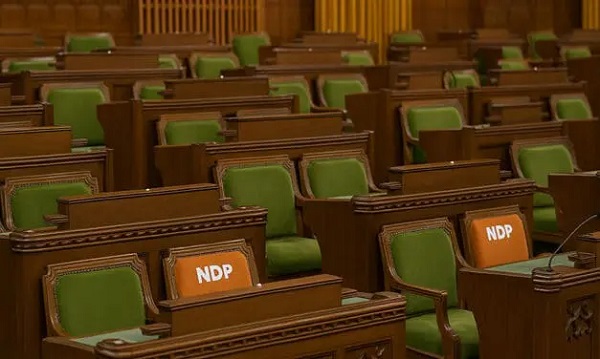
This article supplied by Troy Media.
 By Michael Taube
By Michael Taube
Official party status requires 12 seats. The NDP got seven. End of story
Rules are rules.
That, in a nutshell, is why the NDP wasn’t granted official party status in the House of Commons on Monday. Prime Minister Mark Carney and the
Liberals, to their credit, made the right decision.
Let’s examine why.
The 1963 Senate and House of Commons Act passed an amendment that gave an annual allowance to party leaders other than the prime minister and
leader of the Opposition. In doing so, the Canadian government had to establish what constitutes a “political party.” The definition they came up with was a sensible one: it had to have a “recognized membership of 12 or more persons in the House of Commons.”
This important amendment is still used today.
The NDP fell from 24 to a paltry seven seats in last month’s federal election. (There are a total of 343 seats in the House of Commons.) They finished with 1,234,673 votes, or 6.29 per cent, which was behind the Liberals, Conservatives and Bloc Québécois. Party leader Jagmeet Singh, who had represented the former Burnaby South riding since 2019, finished a distant third in the newly created Burnaby Central riding and resigned.
The NDP’s seven seats is well below the 12-seat requirement needed for official party status. This means Canada’s socialist alternative won’t be able to ask questions in the House of Commons and will lose out on money for research purposes.
Or, to put it another way, they’re plumb out of luck.
Hold on, some people said. They pointed out that the NDP’s seat count and popular vote only plummeted because many progressive voters backed Carney and the Liberals as the best option to counter U.S. President Donald Trump and his tariffs. They felt that the NDP’s long history as a champion for unions and the working class should count for something. They suggested there should be an exception to the rule.
Guess what? They’re wrong.
This is the worst election result in the party’s history. Even its predecessor, the Co-operative Commonwealth Federation (CCF), did marginally better in its first campaign. The CCF won seven out of 245 seats—and earned 410,125 votes, or 9.31 per cent—in the 1935 election. Party leader J.S. Woodsworth, who had represented the riding of Winnipeg North Centre as an Independent Labour MP since 1925, comfortably held his seat.
Meanwhile, this won’t be the first time they’ve ever lost official party status.
The NDP dropped from 43 to nine seats in the 1993 election. It was a dismal showing, to say the least. There was a suggestion at the time that then-party leader Audrey McLaughlin, the first woman to lead a party with political representation in Canada’s House of Commons, deserved a better fate. While the NDP certainly came closer to achieving the 12-seat requirement in this particular election, Prime Minister Jean Chrétien and the Liberals decided against granting them official party status.
Why? As I mentioned earlier, rules are rules.
Then again, British pilot Harry Day notably told his fellow flying ace Douglas Bader in 1931, “You know my views about some regulations—they’re written for the obedience of fools and the guidance of wise men.”
Does this mean that individuals and organizations who follow rules are, in fact, fools? Not at all. While certain rules in a liberal democratic society can range from slightly questionable to utterly ridiculous, they’re usually put in place for a specific purpose.
In the case of the House of Commons, it’s to ensure that a bar has been set with respect to political representation. Is 12 seats the right number? That’s difficult to say. It certainly prevents small protest parties and one-issue parties that unexpectedly win a tiny number of seats in an election from acquiring power and status right off the bat. They need to win more seats and grow in size and stature to reach a point of respectability. Most of them never reach this point and disappear while others float in a constant state of mediocrity like the Green Party of Canada. ’Tis the nature of the political beast.
One final point. If Singh and the NDP had reached double digits in total number of seats in 2025, a solid case could have been made in favour of official party status. If they had finished with 11 seats, it would have almost been a lock. Neither scenario ultimately materialized, which is why Carney and the Liberals did exactly what they did.
Michael Taube is a political commentator, Troy Media syndicated columnist and former speechwriter for Prime Minister Stephen Harper. He holds a master’s degree in comparative politics from the London School of Economics, lending academic rigour to his political insights.
Troy Media empowers Canadian community news outlets by providing independent, insightful analysis and commentary. Our mission is to support local media in helping Canadians stay informed and engaged by delivering reliable content that strengthens community connections and deepens understanding across the country.
2025 Federal Election
Judicial recounts give Conservatives 2 more seats, keeping Liberals short of majority
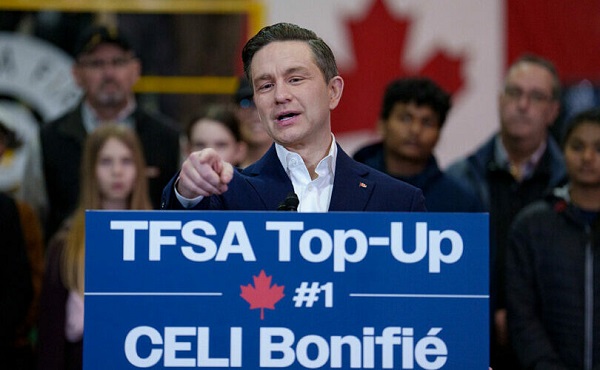
From LifeSiteNews
After a judicial recount, Conservative candidate Kathy Borrelli has officially won over Liberal incumbent Irek Kusmierczyk, in the Ontario riding of Windsor-Tecumseh-Lakeshore.
Judicial recounts from the 2025 federal election have given the Conservative Party two new seats, with one candidate winning by just four votes.
After a judicial recount, Conservative candidate Kathy Borrelli has officially won over Liberal incumbent Irek Kusmierczyk, in the Ontario riding of Windsor-Tecumseh-Lakeshore.
Borrelli got 32,090 votes, with Kusmierczyk getting 32,086 votes, and NDP candidate Alex Ilijoski getting 4,240 votes.
In the Newfoundland riding of Terra Nova-The Peninsulas, Conservative candidate Jonathan Rowe beat out Liberal Anthony Germain by just 12 votes after a recount with the initial result showing a Liberal victory.
The new election results mean the Conservatives now have 144 seats with the Liberals at 169, three short of a majority.
Judicial recounts are automatically triggered when the margin of victory for a candidate is less than 0.1 percent of valid votes.
While these recounts have favored the Conservatives, others have gone in the Liberal Party’s favor.
A May 16 judicial recount switched the southern Ontario riding of Milton East-Halton Hills South to the Liberals with a 21-vote victory over the Conservatives.
Overall, the election results have been a big blow to the Conservative Party, which on top of losing the election also saw its leader, Pierre Poilievre, fail to win his long-held seat. However, Poilievre is expected to run in a yet-to-be-announced by-election in Alberta to reclaim a seat in Parliament.
-

 Business5 hours ago
Business5 hours agoRFK Jr. says Hep B vaccine is linked to 1,135% higher autism rate
-

 Alberta1 day ago
Alberta1 day agoAlberta Independence Seekers Take First Step: Citizen Initiative Application Approved, Notice of Initiative Petition Issued
-

 Crime17 hours ago
Crime17 hours agoNational Health Care Fraud Takedown Results in 324 Defendants Charged in Connection with Over $14.6 Billion in Alleged Fraud
-

 Crime1 day ago
Crime1 day agoSuspected ambush leaves two firefighters dead in Idaho
-
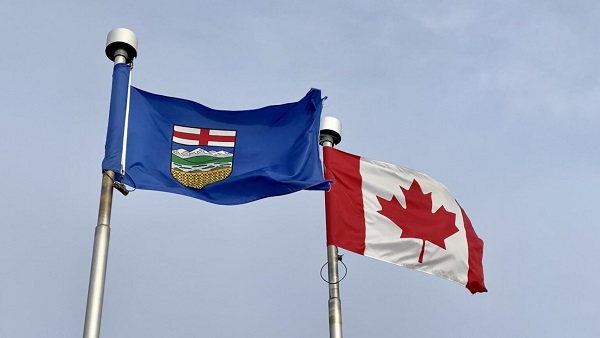
 Alberta1 day ago
Alberta1 day agoWhy the West’s separatists could be just as big a threat as Quebec’s
-

 Business1 day ago
Business1 day agoCanada Caves: Carney ditches digital services tax after criticism from Trump
-

 Health17 hours ago
Health17 hours agoRFK Jr. Unloads Disturbing Vaccine Secrets on Tucker—And Surprises Everyone on Trump
-

 Business1 day ago
Business1 day agoMassive government child-care plan wreaking havoc across Ontario

